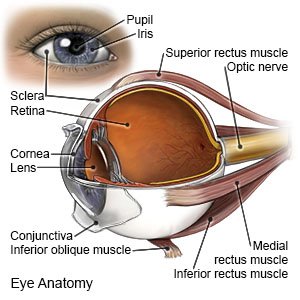LASIK (Laser in Situ Keratomileusis)
Medically reviewed by Drugs.com. Last updated on Apr 6, 2025.
What do I need to know about laser in situ keratomileusis (LASIK)?
LASIK is laser surgery to correct refractive errors of the eye. Refractive errors are common eye disorders that cause blurred vision. These errors happen when there is a problem in the refraction (bending) of light in the eye. They are often caused by an abnormal shape and texture of the cornea. The cornea is the clear outer layer of your eye. LASIK may improve the vision in one or both of your eyes.
 |
How do I prepare for surgery?
- Your healthcare provider will tell you how to prepare for surgery. Arrange to have someone drive you home after surgery and stay with you for a few hours. You may be groggy or sleepy for several hours after surgery. It is important to have someone available to help you and watch for problems that need immediate care.
- Do not wear eye makeup, lotion, or hairspray on the day of your surgery.
- You may need to stop wearing contact lenses 1 week to 3 months before your surgery. This depends on the kind of contact lenses you wear and how long you have been wearing them. Your healthcare provider will tell you when to stop wearing your contact lenses.
- Your healthcare provider may give you medicine to help you stay calm and relaxed during surgery. Tell the provider if you have ever had an allergic reaction to anesthesia or numbing medicine.
What will happen during surgery?
- You will be given eye drops to numb your eyes so you do not feel pain. A tool called a speculum will hold your lids apart so you cannot blink during surgery. A small suction ring will be placed on your cornea. Pressure from the suction ring will cause your vision to fade and become black. A cutting tool will move along the track of the suction ring. It will cut a small, hinged cap or flap on your cornea.
- The flap will be folded over. The area under the flap will be gently cleaned and examined. The laser will be placed over your eye so it can reshape the uncovered layer of the cornea. The flap will be put back in its normal place. The cornea begins to heal almost as soon as the flap is moved back.
What will happen after surgery?
You may be taken to a recovery room. The eye doctor will watch your eyes closely to make sure the flap does not move or wrinkle. Your eyes may feel gritty or itchy the first few days. They may be sensitive to light, watery, or painful. You may have redness on the whites of your eye. Your vision may seem hazy. You may see halos or glare around lights. It may be hard to see at night. These problems usually improve as time passes.
What are the risks of surgery?
You may have eye damage or develop an infection. Your vision may be worse than before surgery. You may still need to use reading glasses. Your vision may get worse again over time. Eye problems such as halos or dry eye may be permanent. You may also develop double vision, eye sores, glaucoma, cataracts, or retinal detachment.
Care Agreement
You have the right to help plan your care. Learn about your health condition and how it may be treated. Discuss treatment options with your healthcare providers to decide what care you want to receive. You always have the right to refuse treatment. The above information is an educational aid only. It is not intended as medical advice for individual conditions or treatments. Talk to your doctor, nurse or pharmacist before following any medical regimen to see if it is safe and effective for you.© Copyright Merative 2025 Information is for End User's use only and may not be sold, redistributed or otherwise used for commercial purposes.
Further information
Always consult your healthcare provider to ensure the information displayed on this page applies to your personal circumstances.
